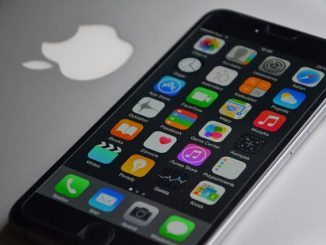It’s no secret that the cost of overstuffed cable bundles is continually on the rise. Since most subscribers are using only a portion of the service, more users are unsubscribing to cable, turning to online streaming providers instead. This cord cutting phenomenon worries cable companies, and with good reason.
With the steep average monthly cable TV bill in the United States, consumers started advocating the freedom to choose cable channels, or at least have more flexibility to unsubscribe to the channels they don’t watch. The support of the “skinny bundle” gained traction in the industry, with cable providers reasoning that the increase in cord cutting could dwindle if they were to sell cheaper alternative to $92 bundles.
Cable providers started experimenting with “skinny bundles,” offering access to channels like NBC, CBS, and ABC, a limited slate of basic cable channels, and an option to add HBO for half the price of the standard cable bundle. In fact, Dish Network’s Sling TV is successful in offering a 25-channel network cable bundle for as low as $20 a month. Other companies like YouTube are also looking into going skinny. Indeed, the concept of cheaper cable bundle is attractive to both cable providers and consumers. However, there’s a hitch to the “skinny bundle” solution – TV networks do not like them. They prefer a take-it or leave-it approach that compels cable providers to sell unpopular channels to consumers.
AT&T Inc. (NYSE:T) is one of the companies that opposes the idea of “skinny bundle.” Business Insider writes that according to Tony Conclaves, AT&T’s SVP of Strategy and Business Development, “skinny bundles” simply don’t make sense in terms of numbers since volume is the key to succeed in pay TV, notwithstanding the current streaming landscape. “We can’t get to scale with skinny bundles,” Conclaves added.
AT&T is a telecom company wireless service provider while Time Warner Inc (NYSE:TWX) is a content company with TV networks like CNN and HBO. These two companies are facing tough times in the cord-cutting trend. By creating a bigger company, more options will be better suited to endure the rapid changes of the TV business. “Skinny bundle” is something that both of them have in common – they dislike it. And with the acquisition of Time Warner, it is all but certain that they will not change their views on trimming the fat, and will continue promoting big bundles.
Another player in the field is hoping to create a “skinny bundle.” According to a report by Peter Kafka of Recode, Apple Inc. (NASDAQ:AAPL) has been attempting to put together a “skinny bundle” of TV channels for years. However, the Cupertino-based company recently changed course and is planning to build an advanced TV guide that will bring together content providers like Netflix, HBO, and ESPN. While it remains unclear if Apple has totally relinquished its vision of putting together a “skinny bundle” TV package, some reports say that Cupertino had a talk with Time Warner before the AT&T acquisition about a possible merger. But with the AT&T-Time Warner merger underway, Apple’s “skinny bundle” ambitions might just be over.
For now, consumers might just have to wait on the idea of customizable cable selection, which is potentially awesome.
- Bulenox: Get 45% to 91% OFF ... Use Discount Code: UNO
- Risk Our Money Not Yours | Get 50% to 90% OFF ... Use Discount Code: MMBVBKSM
Disclaimer: This page contains affiliate links. If you choose to make a purchase after clicking a link, we may receive a commission at no additional cost to you. Thank you for your support!





Leave a Reply